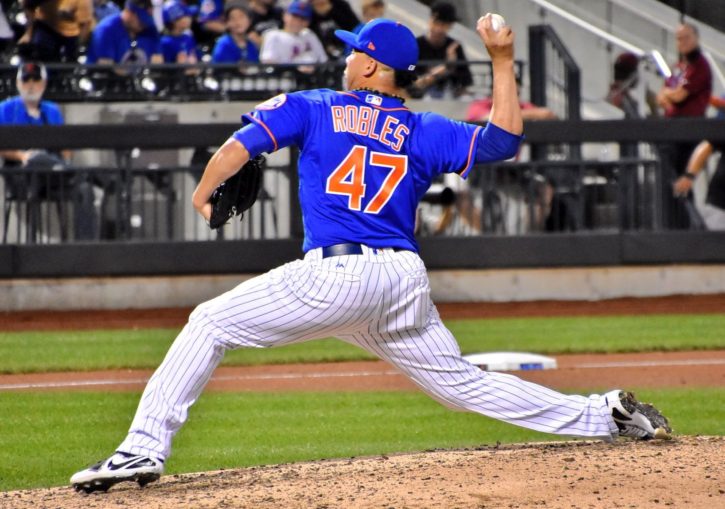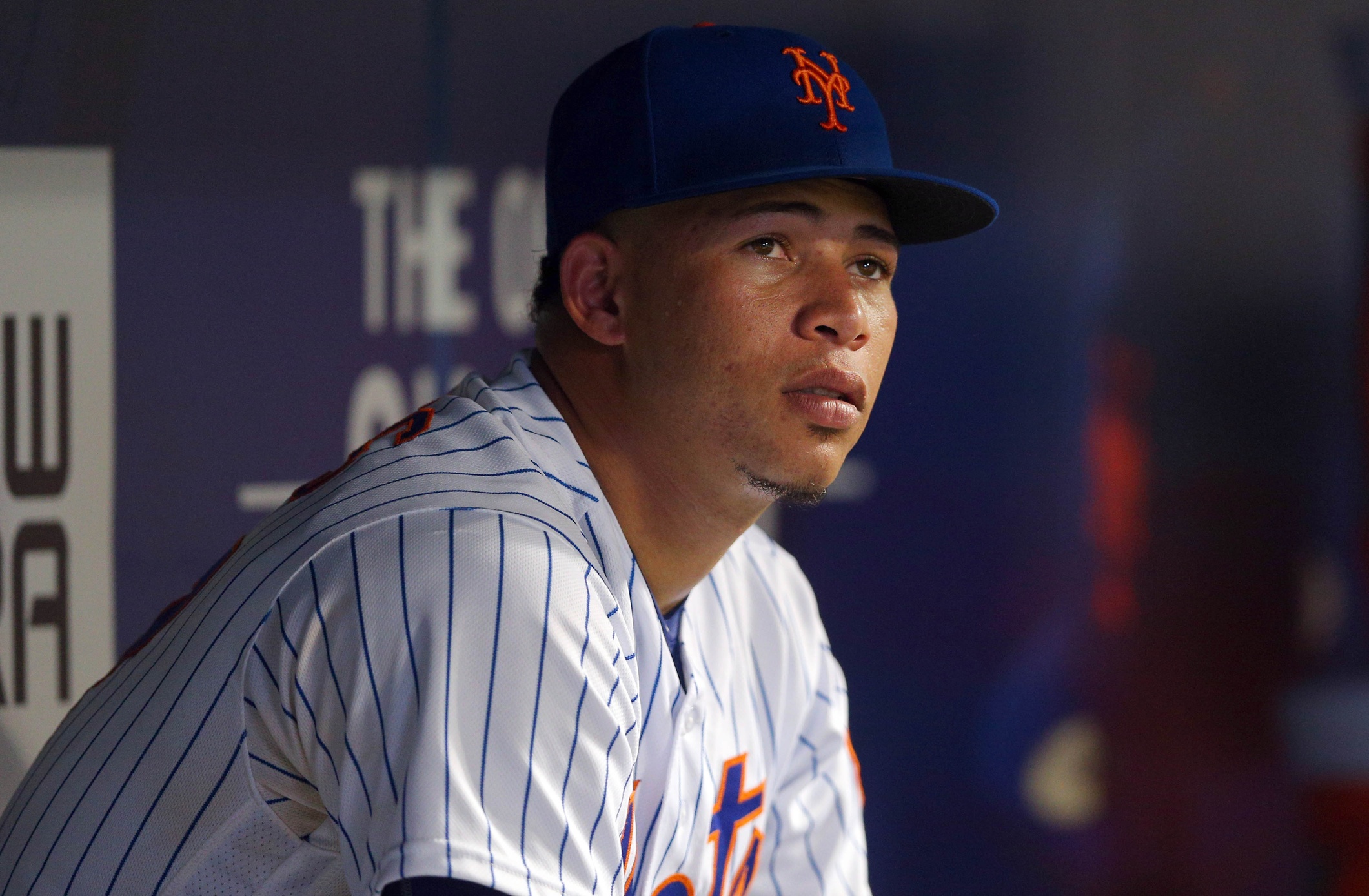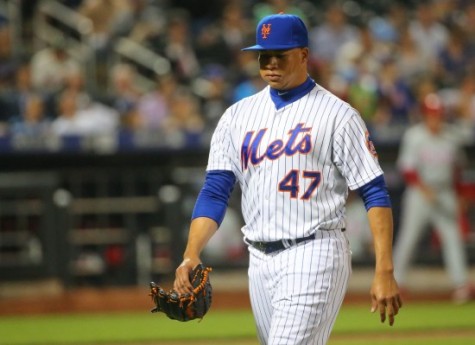
Hansel Robles is at a crossroads in his career. After a dynamite beginning to his run with the New York Mets in 2015, Robles, now 27, has seen those good times turn sour over the last two seasons. Heading into Spring Training, the talented right-hander needs to harness his still-lingering potential and get himself back on track.
After making his debut for the Mets in April 2015 (@ NYY, one inning, one hit, two strikeouts), Hansel Robles continued to impress throughout his rookie year. After that initial quality appearance, he got beat up his next time out, giving up two ER in an inning and a third in Miami.
He rolled through May practically unscathed until two consecutive rough outings to end the month (five hits, four earned runs in on IP over two appearances; 5/25 vs. PHI, 5/30 vs. MIA). From June through the end of the regular-season, Robles was able to keep his respective monthly ERA’s below 4.00 and looked to be gaining more and more confidence with each successful outing.
He finished the year with respectable numbers. In 57 appearances (54 IP), Robles pitched to a 3.67 ERA, 1.019 WHIP, and 10.2 K/9 (3.39 SO/W ratio). For an unheralded rookie with supposed command issues, Robles’ emergence seemed to come just at the right time for the New York Mets. Heading into the playoffs, Robles would prove to be a valuable cog.
Throughout the 2015 postseason, Robles wowed. In three innings, he allowed no hits, walked no one, and struck out four. Robles’ phenomenal postseason performance signified, to me at least, that there is ice-water in this young man’s veins and that when he’s on his game, he can be virtually unstoppable.
Maybe all of the praise that Hansel Robles was receiving from his coaches, the media, and the fans, eventually got to his head because we did not see the same pitcher emerge out the other side of that wormhole.

While Robles was still an effective option for Mets manager Terry Collins throughout the 2016 season, he seemed to unravel not only at inopportune times during the year, but more often than he had in his impressive rookie season.
Robles’ month-to-month 2016 numbers tell a tale of a young pitcher figuring out that he can’t just show up and good things will happen on their own. In April, over 10.2 IP he gave up 12 hits and two earned runs. Well, that’s not so bad. In May, things caught up with him.
In 12.1 IP, Robles allowed six hits, seven earned runs , and five home runs. Even a 15/3 K/BB ratio couldn’t hide the fact that something was most definitely afoot. The rest of Robles’ 2016 season continued on as such; a run of quality appearances followed by a week of getting his pitches tattoed by opposing hitters.
There was one stretch of 2016 that was very kind to Hansel Robles. In July, over 11.2 IP, he gave up 0 ER, struck out 12 and walked just two batters. This hot streak was short-lived. By the end of the season, Robles had taken significant steps back in his development and his season totals reflected as such.
After performing capably through 2015 and striving throughout the postseason, Robles followed up his impressive rookie campaign with the following stat line: 68 appearances (77.2 IP), 3.48 ERA (a slight improvement, but along with an increase in ERA+; 104 in 2015 to 116 in 2016 these were the only ones), 1.352 WHIP and 9.8 SO/9.
The next season was no kinder to Robles, as things got even more out of hand for him. He finished 2017 with the worst stats of his short career. Over 56.2 IP his ERA ballooned to 4.92, his ERA+ dropped dramatically to 86, and his WHIP stayed in the same neighborhood as the previous season (1.341, still alarming).
Heading into 2018, the New York Mets need Hansel Robles to put aside any developmental roadblocks he may have encountered over the last two years and get back to being the effective and, at times, downright filthy young reliever he has shown he can be.
Hopefully, Mets’ manager Mickey Callaway can get Robles back where he was. If he indeed can work his Mickey Magic and get the 27-year-old back on track, it could end up having quite the positive effect on the rest of the Mets partially-revamped-but-definitely-improved bullpen.
If Robles can prove himself early on and gain Callaway’s and pitching coach Dave Eiland‘s confidence, as we’ve seen in the past, he could then use each successful appearance as proverbial stepping stones and eventually regain his rightful place among some of the most feared relief pitchers in the National League.
If that all pans out, Robles could become an instrumental fixture and could potentially be the most important piece to the New York Mets puzzle this season: their bullpen.
















